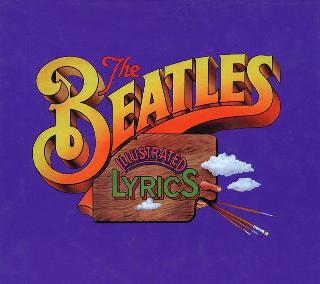Index
Home
Vorige
No Reply
Composer(s) : Lennon and McCartney
Year :
Chords/Tabs: No Reply
Notes On "No Reply" (NR)
Copyright 1989 Alan W. Pollack
All Rights Reserved
The intense and complex emotionality of "No Reply" comes as much from its
construction as it does from the screaming, double-tracked vocal. We'll do
an end-to-end run-through but be forewarned to keep your eye on the third
phrase of the verse in particular.
Overall Structure
The overall form is compact:
Verse - Verse - Break - Verse - Coda
There is only one break, which is itself followed by only one verse.
The break is noteworthy in that it is equal in length to the verses;
a full sixteen measures.
The form is curiously similar to that of Day Tripper but for different
reasons. In DT, we saw a break so climactic that a repeat would have
been anti-climactic. In NR, the break provides relief from the intensity
and dramatic shape of the verses. The issue here is not so much that
the break can't be repeated as much as it is that we couldn't handle
more than three verses without feeling burnt out. Play out some variations
in your head (e.g., verse-verse-break-verse-verse-break-verse) and you'll
see what I mean.
Brief Technical Digression -- the ii6 chord
We've already seen a couple of functionally sub-dominant chords in the other
songs we've looked at: IV, ii, and V-of-V. In NR we encounter a new variant,
the "ii6/5" chord, which is nothing other than the ii7 chord in its first
inversion. (For you guitar players we're talking about a d minor 7th
chord with the f-natural in the bass.)
The ii6/5 chord is an especially cute sub-dominant because of its "added sixth"
sonority; as though ii and IV were super-imposed on each other. Its usage here
is all the more appropriate because our ears make an alliterative
association between it and the C chord with an added sixth which is used
heavily throughout; analogous to the way that people sometimes say
that the blue flecks in your necktie "pick up" the color of your eyes.
The Opening
We start off, yet again, in the midst of the action; the boys seem to have
liked doing that. Both the rhythmic pickup of the vocal part as well as the
chord progression contribute to this effect. The first downbeat in the song
is actually on the syllable "fore" in "This happened once before." The first
chord of the piece is the ii-6/5 which moves quickly to V -> I.
The Dramatic Verse
From a formal perspective, we have a straightforward 4-by-4, 16 measure
verse but the dramatic AABA shape created by the four phrases is worthy
of note.
The A phrase is musically straightforward. We have a full cadence with a
two-measure prolongation of the tonic:
d G C -
C: ii6 V I(added sixth)
5
And of course, this expository A phrase is repeated immediately.
The contrasting B phrase ("I saw the light/I nearly died") is the focal
point of dramatic tension for the entire song; it's no accident that this
material is recycled in the coda. While the violent syncopations in this
phrase are not to be ignored for their contribution to the tense effect,
let's for now zero in on the harmony:
a e F7 e Note how the pitch "e"
is sustained through the
C: vi iii IV7 iii entire phrase!
In my personal experience of this phrase I definitely expect something other
than a return to e minor for the last chord. The first pair of chords are
fine; vi -> iii is a rather "logical" progression because it lies along the
circle of fifths. Then the tension increases to a peak in the third chord
where we move to to F with the tremendous dissonance of e sustained from the
previous chord. I believe that we expect to go "forward" from this
F chord, not slide impotently backwards to where we came from, and yet,
this turn of events is surprisingly effective because it provides an
uncanny foil to the lyrics. The words are self assertive and
confrontational while the harmony vacillates. This contrast lends
a degree of subtle complexity to feeling projected by the song; it's not
clear if our hero is really ready for his moment of reckoning.
The repeat of the A phrase at the end of the verse nicely makes for a
dramatic "arch" shape; further pulling back from the emotional
peak of the previous phrase. Harmonically, the juxtaposition of this last
phrase to the end of the B phrase provides us with an e-to-F chord progression
which finally does move up to G. Focus your ears on the bass line in phrases
three and four of the verse if you want to experience the vacillation and
eventual movement more keenly. After the descent to E, the repeated
vacillation between E and F before finally moving up to G reminds me of the
"two-steps forward-one-step backward" physical sensation of pushing a heavy
object up an incline. Here's the bass line of the third and fourth phrase
run together (yes, this would be easier with music paper):
A
G
F F**
E E
C
(** In the first verse of the song, if you listen very carefully, you might
argue that the second F in the above bass line is actually a D. However,
the other two verses definitely show F, and though you may throw me my
own line about avoiding foolish consistency, I'm going to say that in
this case, the D in the first verse was a sloppy "mistake". Actually,
the D instead of the F also makes for a nice melodic bassline too but I
still wish they were consistent in this case. This would certainly be an
instance where an alternate take of the song might help settle the point.)
The Break
The break ("If I were you ..") sounds at first like it's going to stray much
further away from home harmonically that it eventually does. This sort of
harmonic wilting of resolve provides still more of a foil to the decisive
lyrics. The following eight measure phrase is repeated:
C E A - d F C -
C: I V-of-V-of-ii ii IV I
V-of-ii
The E and A chords create a momentary intimation of modulation which is
quickly dispelled. The E chord "might" be a V-of-vi, and the appearance of
A Major instead of a minor is a further surprise. In the instant before we
realize that it's only V-of-ii we think we "might" be actually switching keys
to A! But alas, it's really turns out to be "only" V-of-ii and we're right
back in the key of C.
The Coda
The verse is repeated once more following the break and then we're treated
to a four-measure coda which is a variant on the B phrase of the verse:
a e F7 C
C: vi iii IV I9
6
The final chord is special; a sonorous, freely dissonant added sixth plus
added ninth (notes A and D sounding on top of a C chord). It's interesting
to note that while the ninth in the final chord is "free", it's not without
reasonable motivation. If you look back at the first two chords in the
phrase (a -> e), there is an inner voice that moves downward from C in
the first chord to B in the second chord. The same thing happens in
phrase B above when the F7 chord slides down to E. At any rate, in our
final chord progression, the added-ninth comes into play when an
inner voice moves from E (in the F7 chord) to D (on top of the C chord.)
You think I'm pushing it ? I say *listen carefully* and savor the way
they let that final chord ring out!
Regards,
Alan (awp@mirror.tmc.com)
---
"They tried to fob you off on this musical charlatan,
but *I* gave him the test." 080189#8
Ook op Beatles for Sale:
Ook op Anthology 1:
(c) 2024 Serge Girard


 (c) Alan Aldrigde, The Beatles Illustrated Lyrics
(c) Alan Aldrigde, The Beatles Illustrated Lyrics